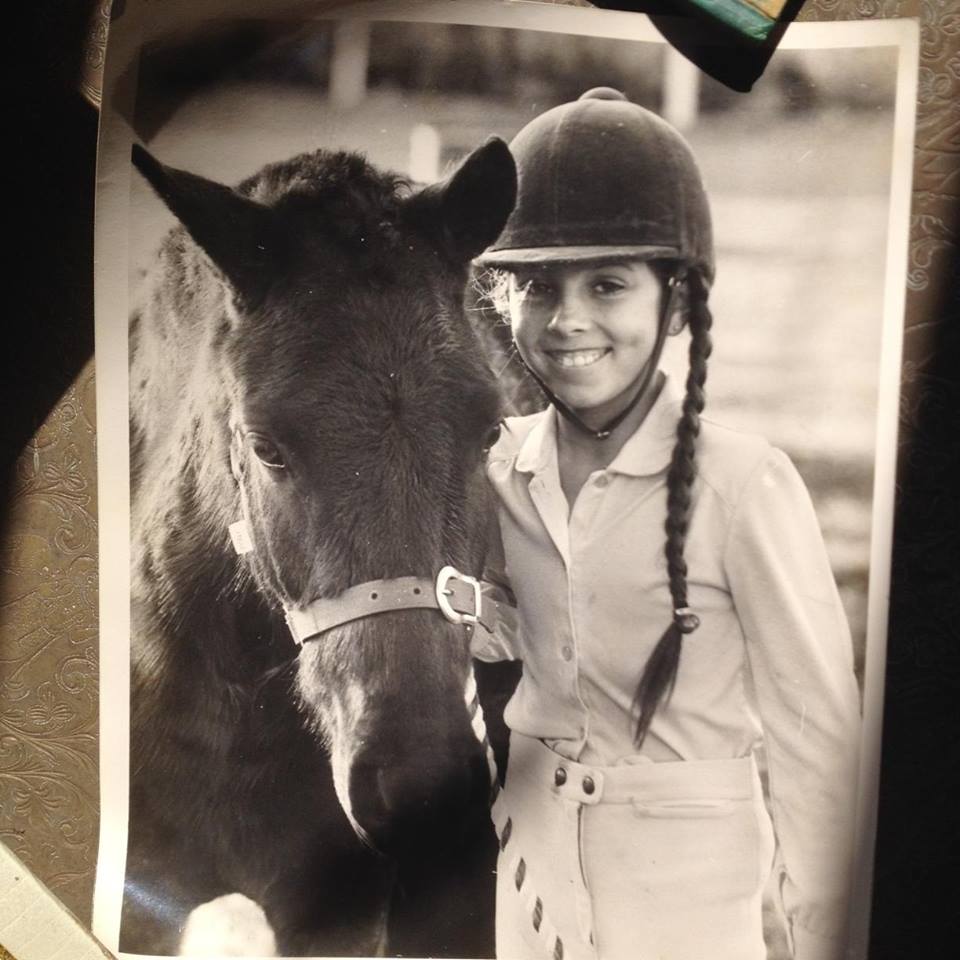
A river cruise is a wonderful way to relax, watch the world drift by at a leisurely pace and explore the towns, cities and countryside of Europe and exotic destinations around the globe.
With more than 100 river ships launched over the past four years -- and 20 more debuting in 2017 -- along with an increasing number of river cruise lines and itineraries on offer, river cruising is the fastest-growing sector of the worldwide cruise market.
This means there's never been a better time for first-timers to get onboard. Seasoned river cruisers can expand their horizons and experience new and up-and-coming places. Where will your journey take you? Take a look at our river cruise tips to find out more.
Popular River Cruise Destinations: Europe | Asia | Egypt | South America | U.S. & Canada
What to Expect
Size:
Whether you're in Europe, South America, Asia, the U.S. or Africa, river cruising shares similarities -- along with plenty of dissimilarities -- from ocean cruising. The first point is that ships are much smaller than ocean vessels, particularly in Europe, where they are restricted in width and length to fit into locks and sail beneath low bridges, and parts of Asia where they have to navigate shallow waters.
Ports:
Unlike ocean ships, river vessels visit a new port each day, sometimes even more than one; passengers can visit up to four countries in a week. Itineraries are port-intensive with a busy program of culture-rich shore excursions -- mostly included in the fare and some fee-extra. An actual full day onboard is uncommon, though there is always cruising time, including nighttime sailing on some itineraries.
Food:
All meals are included, with many lines offering complimentary wine, beer and soft drinks with lunch and dinner, plus unlimited tea and coffee. Some lines are all-inclusive and, in addition to an open bar, they also cover gratuities. There is generally an open-seating policy, so you can sit where you want. Meals can be fairly regimented due to the small size of the galley, so one sitting for breakfast, lunch and dinner is the norm (although some lines are more flexible with timings than others). Lighter meals can be enjoyed in the lounge, or outside on the deck, and some vessels have additional specialty restaurants.
Dress code:
The onboard experience is more laid-back than it is on oceangoing voyages, with no formal dress code. There's usually a captain's reception and gala dinner, where some people opt for smarter outfits, but it's not obligatory. The most important packing tips are to take layers to cope with unpredictable weather and comfortable shoes or sneakers, as many tours involve walking on cobblestones or uneven surfaces.
Entertainment:
Entertainment is low-key -- with the major attraction being the passing scenery (there is always plenty to see on both banks) and ports of call. The intimate nature of riverships also means you'll soon get to know your fellow passengers, and you certainly won't get lost in the crowd.
Cabins:
Staterooms tend to be smaller than oceangoing vessels, but they are not short on home comforts, particularly on the newest ships. Standard amenities include hotel-style beds, bathroom with high-quality toiletries, TV and entertainment system, hair dyer, safe and ample storage space. Some cabins have French balconies and proper walkout verandas, along with stocked mini-bars, suites with butler service and four-poster beds. If you're on a budget, the lower deck cabins have fixed windows but still provide a view, albeit at water level. Because cabin configurations and facilities vary from line to line, and ship to ship within a fleet, be sure to get all the details on how your stateroom will look before you book.
Motion:
When it comes to sailing, inland waterways are very calm and flat, so seasickness is never an issue on a river cruise.
Challenges:
River cruises are not well suited to wheelchair users or passengers with severe mobility issues. Most modern ships have elevators, and some have adapted cabins, but gangways can be steep, depending on the level of the river water, and sometimes ships are moored side by side, necessitating walking across one or more to disembark. Always check with a line before booking to assess how user-friendly it will be.
Editor's Note: Barge cruising -- which mostly focuses on boats that carry less than 25 passengers and ply the waters of even smaller rivers (and often just stay in canals) -- is a completely different style of cruising. They have a very cozy atmosphere and can also be chartered by families or groups of friends. The purpose-built hotel boats or converted working vessels contain comfy cabins and modern facilities, and most have onboard bikes. Read more about it in Canal Cruise Tips.
Choosing a River Cruise Line
Just like ocean cruise lines, each river cruise line has a different style and personality, even though the ships all look pretty much the same on the outside. Comfort and ambiance, as well as inclusions, can vary widely between lines' own fleets. New trends in riverboat design mean that vessels debuting after about 2008 offer a lot more extras and lot more space than the older boats.
Each river has its own limitations, and these determine what size ships operate on them. Locks can limit length, low-hanging bridges can restrict height and union rules for lock managers can determine times boats can cruise. Here are more specifics, by river region.

Europe
Europe is the world's top river cruising destination, and it's the best place to start if you've never tried a river cruise.
The largest number of cruises can be found on the Rhine, which flows through Switzerland, Liechtenstein, Austria, Germany, France and the Netherlands, and the Danube, which flows from the Black Forest in Germany to the Black Sea in Romania, passing through or between Austria, Slovakia, Hungary, Serbia and Bulgaria on the way. Which one is right for you?
Offshoots of the Rhine include the Moselle, known for its steep vineyard-covered hillsides and the Main, which connects the Rhine with the Danube through a series of canals. The Danube doesn't have as many tributaries, but if you've already done the central section through Austria's Wachau Valley, try the Lower Danube, which runs through Serbia, Hungary, Romania and Bulgaria.
Other popular rivers include France's Seine, where ships are based in Paris and cruise down to the Normandy region. The Rhone, also in France, offers Provencal experiences between Lyon, France's second largest city and Arles. River cruises through Bordeaux and the Loire Valley are also becoming popular.
Other European rivers include the Elbe, which rises in Germany and flows into the Czech Republic; Italy's Po, gateway to cities such as Venice and Padua, and Portugal's Douro, surrounded by rugged, green scenery.
Russia's Volga, linked to a series of canals, lakes and waterways, is another popular river for cruising, and voyages typically sail between Moscow and St. Petersburg, with overnights spent in each city at the beginning and end of the cruise.
There are also seasonal cruises, including the spring "tulip time" itineraries sailing from Amsterdam through the Netherlands and Belgium. And in winter, Christmas markets voyages, primarily along the Rhine and Danube, are magical ways to celebrate the festive season.
Europe River Cruise Lines:
Most of the major river cruise lines sail in Europe, including AmaWaterways, APT, Avalon Waterways, CroisiEurope, Emerald Waterways, European Waterways, Grand Circle, Riviera Travel, Scenic, Tauck, Uniworld, Vantage Deluxe World Travel and Viking River Cruises. Amadeus, a long-established Austrian line, and German-owned A-Rosa are now selling cruises in the U.S., U.K. and other English-speaking countries. A newcomer on the scene is ocean line Crystal, which launched its first river vessel in 2016 and has more on the way.
The Season:
The river cruise season begins in early spring (typically in late March) and runs through late fall (the best time for value-seekers). Lines keep a handful of ships available for the holiday markets season (late November through New Year's Day) on the Rhine and Danube. And then they put ships away for the season, usually spending off-months on maintenance and refurbishment.
Challenges:
Too much rain or not enough can be problematic for river cruises, particularly in, but not limited to, spring (when snowmelt fills the rivers) and fall (when the rainy season begins). Rising or falling rivers can mean that passage under low bridges is not possible or that water levels are too shallow to permit safe cruising. Typically river lines plan ahead -- and in these situations may organize longer day trips, using roads to get around, or even for passengers to swap ships at key trouble points.

Asia
Myanmar, formerly Burma, has become the hot destination for river cruises in Asia, with lines launching more ships in order to meet demand. Most cruises are on the Irrawaddy, ranging from four-night mini-cruises from Mandalay to Bagan to two-week itineraries from Yangon and Mandalay, or Bagan. Even more remote is the Chindwin, the largest tributary of the Irrawaddy.
Another up-and-coming destination is India. Sailing on the Ganges, the country's holiest river, most cruises are seven-night sailings from Kolkata coupled with a land-based itinerary and visit to the iconic Taj Mahal. Even more remote is the Brahmaputra, in India's Assam district.
The Mekong River runs through Cambodia and Vietnam, with the most popular seven-night cruises wending their way from Siem Reap to Ho Chi Minh City (many then opting for land tour extensions that visit Hanoi), passing rural villages, exotic temples and floating markets. New cruises take in the Upper Mekong, from Laos to China.
Smaller colonial-style vessels are used on the Irrawaddy, Ganges and Mekong, carrying from 10 to around 60 passengers.
Elsewhere in Asia, there is China's Yangtze River, which typically start and finish with a land-based stay in Shanghai and Beijing. Cruises range from three days to one week and will include a transit through the huge Three Gorges Dam. River ships that ply the Yangtze are much larger than those on other Asian rivers, so have more onboard facilities such as shops and coffee bars.
Asia River Cruise Lines:
APT, Abercrombie & Kent, AmaWaterways, Avalon Waterways, CroisiEurope, G Adventures, Grand Circle, Pandaw, Riviera Travel, Scenic, Uniworld, Wendy Wu and Viking River Cruises offer cruises in Asia.
The Season:
Some Asia operators will go year-round, while others stick to the main April-to-October season.
Challenges:
On the ships, the cruise lines offer similar levels of service and quality as other regions, but the terrain can be rugged, and touring can be challenging. Disembarking on sections of the Mekong and Irrawaddy can involve walking on narrow planks and climbing muddy banks, so travelers need reasonable levels of fitness and mobility. The focus is on smaller, more rural pleasures, rather than major cities. (Visits to the major urban metropolis are usually organized as pre- or post-voyage experiences.)

Egypt
Following the course of the Nile is an impressive and authentic way of tracing the course of Egyptian history. Nile river cruises traverse the waters between Luxor and Aswan, with itineraries ranging from three days to a week in length. On most trips, the major port stops along the Nile include Esna, Edfu and Kom Ombo, but longer cruises may also call at Dendera and Qena (and spend more time onshore, to boot).
Egypt River Cruise Lines:
Abercrombie & Kent, Oberoi, Uniworld and Viking are among the river cruise operators offering Nile itineraries, although travelers can also book Nile cruises on chartered vessels through various tour operators.
The Season:
Nile River cruises operate year-round, but the high season is typically from October to May when it's not too hot.
Challenges:
In recent years Egypt's tourist industry has been blighted by a spate of violent political uprisings and terrorist attacks. Although the tourist areas along the Nile are currently not affected by travel bans, the U.S. Department of State and U.K. Foreign Office advise visitors to be aware of the potentially volatile situation that has seen many river cruise companies curtail their sailing programs.

South America
Several oceangoing cruise ships offer itineraries on the Amazon River, but they tend to focus on Brazil (from Manaus, the Amazon's largest city, to Rio de Janeiro and Buenos Aires), where the river is wider and ports are more urban. A cruise on this section of the river is almost like being at sea.
But riverboats that ply the Amazon can maneuver into even more offbeat parts of the Amazon basin and offer a much more adventurous experience. (Peru's portion of the Amazon is particularly popular.)
Ships embark in Iquitos or the newer port just upriver in Nauta. Instead of touring cities or ancient temples, you'll trek through the rainforest to look for monkeys, river dolphins, parrots, sloths, insects and fascinating plant life or visit small villages where you can interact with the indigenous people. More so than on other river cruise itineraries, you'll actually spend little time ashore because the voyages focus on the river itself, with motorboat rides along the water's edge to look for bird life, piranha fish and alligators.
South America River Cruise Lines:
Aqua Expeditions, Avalon Waterways, Delphin, International Expeditions, Lindblad Expeditions and Pandaw offer Amazon itineraries.
The Season:
Amazon River cruises operate year-round. The water levels do fluctuate, however -- up to an astounding 40 feet -- with December through May being the high-water season and the rest of the year low-water season. High-water season floods the forest, allowing you to move deeper into the forest via skiff and zip around smaller tributaries that, otherwise, are inaccessible. Low-water season permits more onshore walks.
Challenges:
A rugged place to explore, passengers need a good basic level of fitness. Crime has been an issue on the Amazon; cruise lines have reacted by beefing up onboard security.

The U.S. & Canada
In 2012, the Mississippi River, which had seen several of its riverboats go out of business, began a true renaissance when American Queen Steamboat Company refurbished the 1995-launched American Queen. In 2015, American Cruise Line (ACL) launched the brand-new Queen of the Mississippi paddleboat.
The Mississippi and its connecting tributaries is the most visible of North America's rivers when it comes to cruise lines, and the main itinerary is a seven-night cruise between New Orleans and Memphis, although you can also take an Upper Mississippi cruise between St. Louis and St. Paul. The Ohio River is also popular. ACL's other boats cruise along the East Coast's Intracoastal Waterway, the Chesapeake Bay and New York's Hudson River.
In Oregon, there are also seven-night cruises on the Columbia and Snake Rivers, which are gaining in popularity. They follow the historic route used by 19th-century explorers Meriwether Lewis and William Clark when they journeyed across the U.S. in search of the Pacific Ocean.
Several lines also offer warm-weather cruises along the Saint Lawrence Seaway, which skirts the borders between New England and Canada, as well as the Great Lakes.
North American River Cruise Lines:
American Cruise Lines, American Queen Steamboat Company, Blount Small Ship Adventures, French America Line, Lindblad Expeditions, St. Lawrence Cruise Lines and Un-Cruise Adventures.
The Season:
You can find North America river cruises from March to December, but sail dates and seasons will vary, depending on the particular river you'd like to sail. Christmas market cruises along the Lower Mississippi began in 2015.
Challenges:
One big difference between European and American river cruising is that most of the latter's cosmopolitan cities grew up around coastal ports, rather than rivers. So while you may visit the Mississippi's New Orleans and Memphis, the Chesapeake Bay's Baltimore or the Hudson's New York, these trips definitely are for slower-paced travelers.

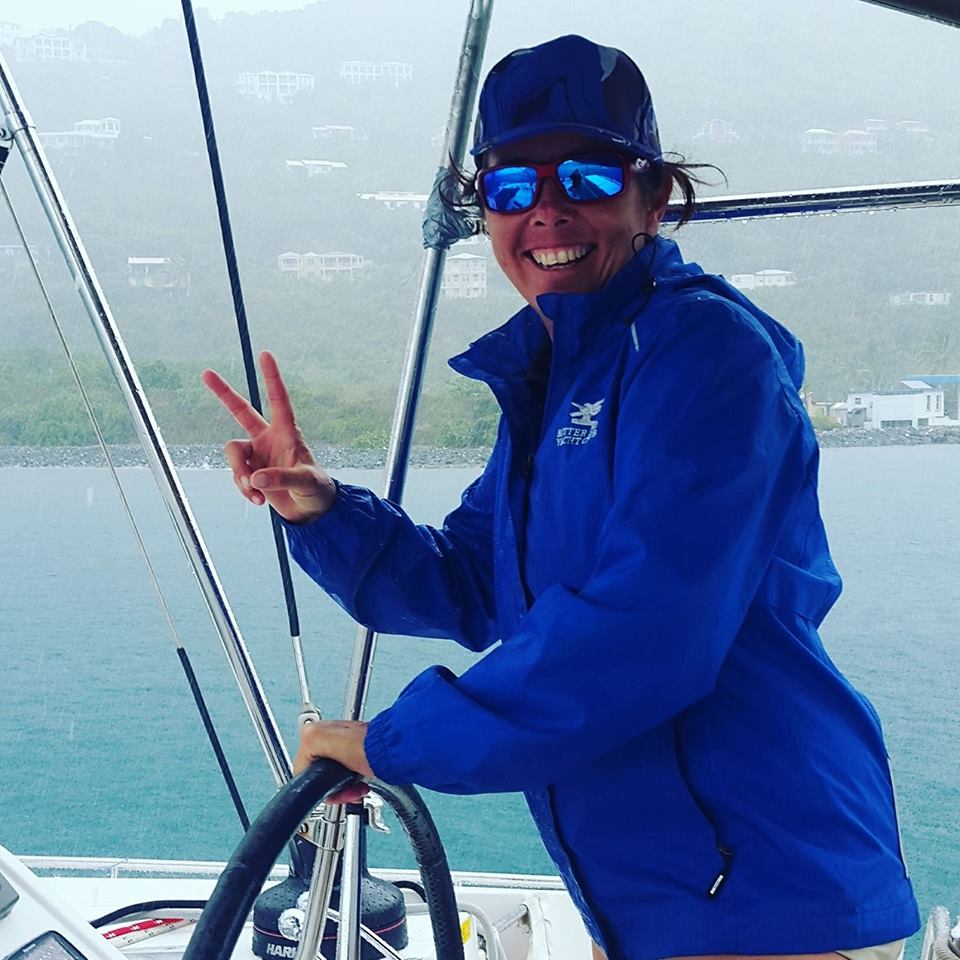 things about her and her life journey, and we are very eager to share her story. Although, currently nothing compares to the support and love she is showing the stranded islanders with her new kitchen and love of cooking!
things about her and her life journey, and we are very eager to share her story. Although, currently nothing compares to the support and love she is showing the stranded islanders with her new kitchen and love of cooking!


 ticket to London. 1.5 years later I returned home with a whole new outlook and vision for my future. I had worked various jobs overseas as I moved through different countries and cultures. From a marine park to hospitality positions and an apprentice jockey at a famous stable. I returned home and moved to Byron Bay and started working in the charter industry at a busy Byron Bay dive shop called Sundive.
ticket to London. 1.5 years later I returned home with a whole new outlook and vision for my future. I had worked various jobs overseas as I moved through different countries and cultures. From a marine park to hospitality positions and an apprentice jockey at a famous stable. I returned home and moved to Byron Bay and started working in the charter industry at a busy Byron Bay dive shop called Sundive.
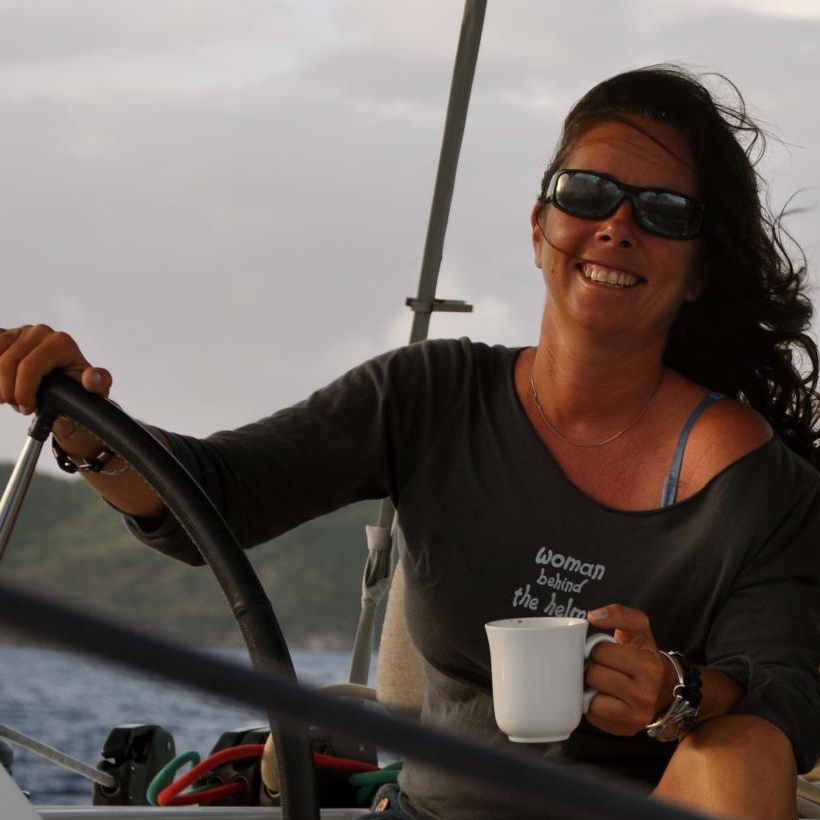
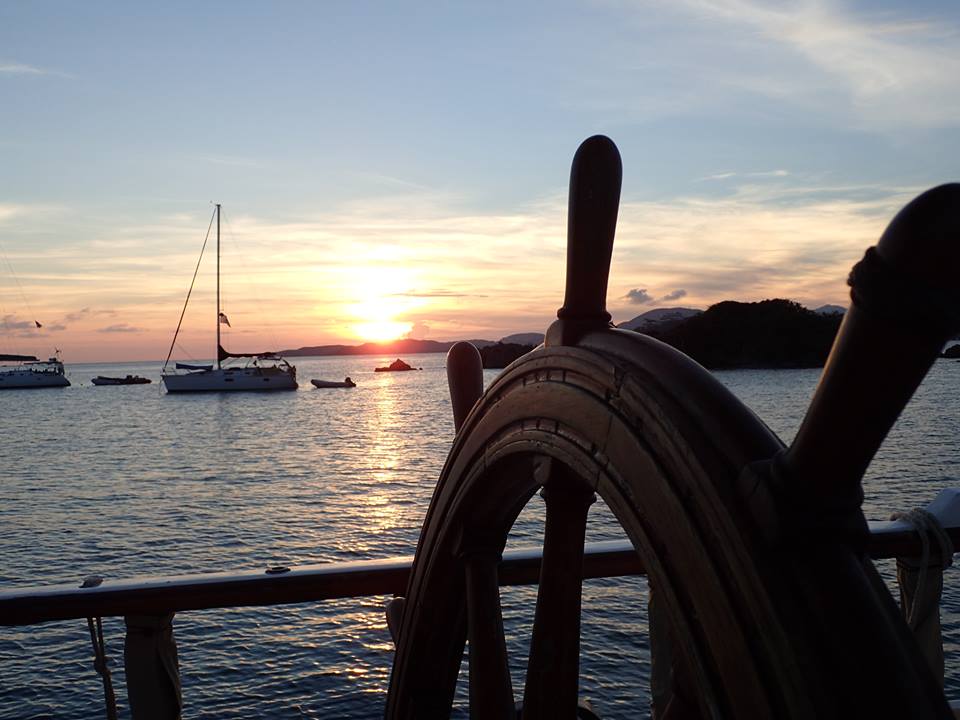 I would have to say the ‘Nature Experiences’ I have had over the years. My love for animals, the ocean and adventure is what has driven me to choose a life away from family, friends and somewhat traditional responsibilities. I would say a story I do tell, which gives me a chill of excitement, would be when I was sailing into the Galapagos islands on a delivery to Australia from Road Town, BVI. My brother, Glen, was onboard and this was not only his first ever sailing experience yet also his first long sail --the Pacific Ocean! We could see the Galapagos Islands in the distance and dropped the sails as there was a huge amount of leatherback turtles on the surface, as well as seals, sailfish and sharks. We didn’t want to hit anything. I was at the helm and heard a huge blow from the spout of an orca whale right next to the boat! The orca was riding our wake and crossing under the boat and jumping in the wake! I could hardly yell out to the rest of the crew, I was lost for words! It looked so surreal. As far as nature goes, the Galapagos Islands is the most amazing group of islands I have visited to date. The following day was spent scuba diving with hundreds of hammerheads, seals, and a thousand other marine life. Albatross, aquatic iguanas and land tortoises were also seen while there.
I would have to say the ‘Nature Experiences’ I have had over the years. My love for animals, the ocean and adventure is what has driven me to choose a life away from family, friends and somewhat traditional responsibilities. I would say a story I do tell, which gives me a chill of excitement, would be when I was sailing into the Galapagos islands on a delivery to Australia from Road Town, BVI. My brother, Glen, was onboard and this was not only his first ever sailing experience yet also his first long sail --the Pacific Ocean! We could see the Galapagos Islands in the distance and dropped the sails as there was a huge amount of leatherback turtles on the surface, as well as seals, sailfish and sharks. We didn’t want to hit anything. I was at the helm and heard a huge blow from the spout of an orca whale right next to the boat! The orca was riding our wake and crossing under the boat and jumping in the wake! I could hardly yell out to the rest of the crew, I was lost for words! It looked so surreal. As far as nature goes, the Galapagos Islands is the most amazing group of islands I have visited to date. The following day was spent scuba diving with hundreds of hammerheads, seals, and a thousand other marine life. Albatross, aquatic iguanas and land tortoises were also seen while there.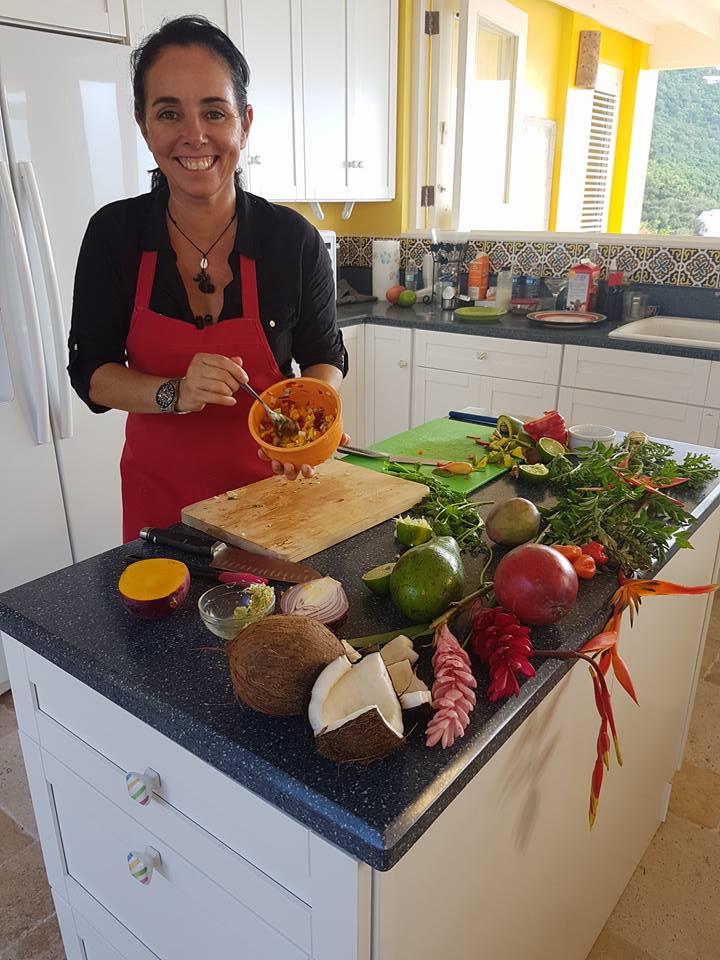


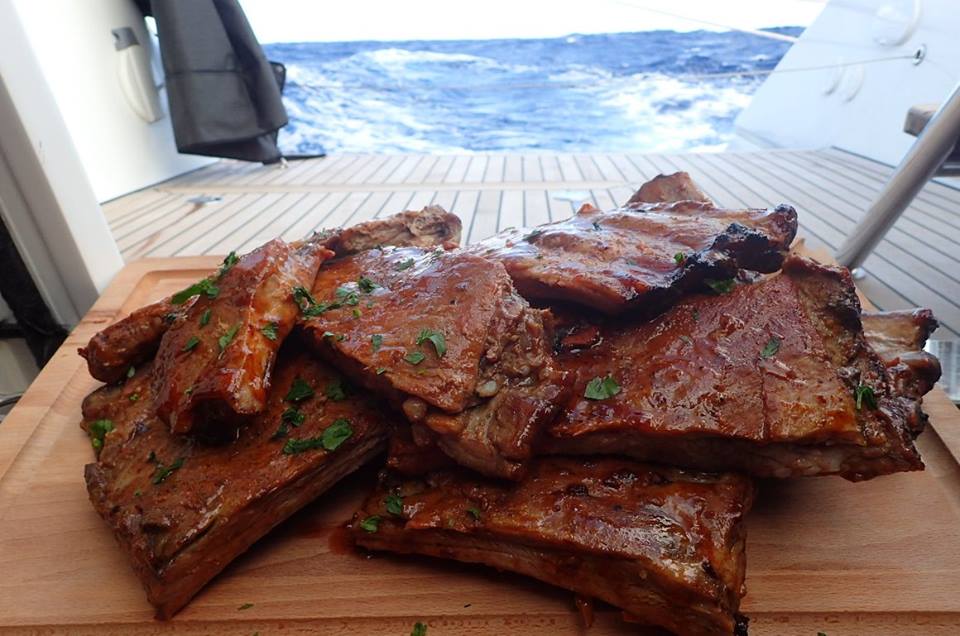 Starting a business anywhere is difficult, this is number 3 for me. It has been a challenge here in the BVI with the different laws and regulations. Some more difficult than back home in Australia and some so much more lenient. The island style life can be somewhat relaxed yet also the process of getting a trade license (necessary for everyone not born here in the BVI) and getting work permits for staff, bank loans and recognition is a difficult journey for an outsider. Everyone wanting to start a business must have a ‘belonger’ who is someone who has been living in the territory over 20 years and passes the eligible ‘belonger’ status. This would be a person born in the BVI who will hold 51% of the business. Even though the British Virgin Islands is an overseas territory of Britian, this does not allow any leniencies to those who carry a British passport. I have an Irish passport (my dad is from Dublin), Australian Passport, US visa and a BVI residency. I do like the rules here as it keeps the island quaint and unique.
Starting a business anywhere is difficult, this is number 3 for me. It has been a challenge here in the BVI with the different laws and regulations. Some more difficult than back home in Australia and some so much more lenient. The island style life can be somewhat relaxed yet also the process of getting a trade license (necessary for everyone not born here in the BVI) and getting work permits for staff, bank loans and recognition is a difficult journey for an outsider. Everyone wanting to start a business must have a ‘belonger’ who is someone who has been living in the territory over 20 years and passes the eligible ‘belonger’ status. This would be a person born in the BVI who will hold 51% of the business. Even though the British Virgin Islands is an overseas territory of Britian, this does not allow any leniencies to those who carry a British passport. I have an Irish passport (my dad is from Dublin), Australian Passport, US visa and a BVI residency. I do like the rules here as it keeps the island quaint and unique.